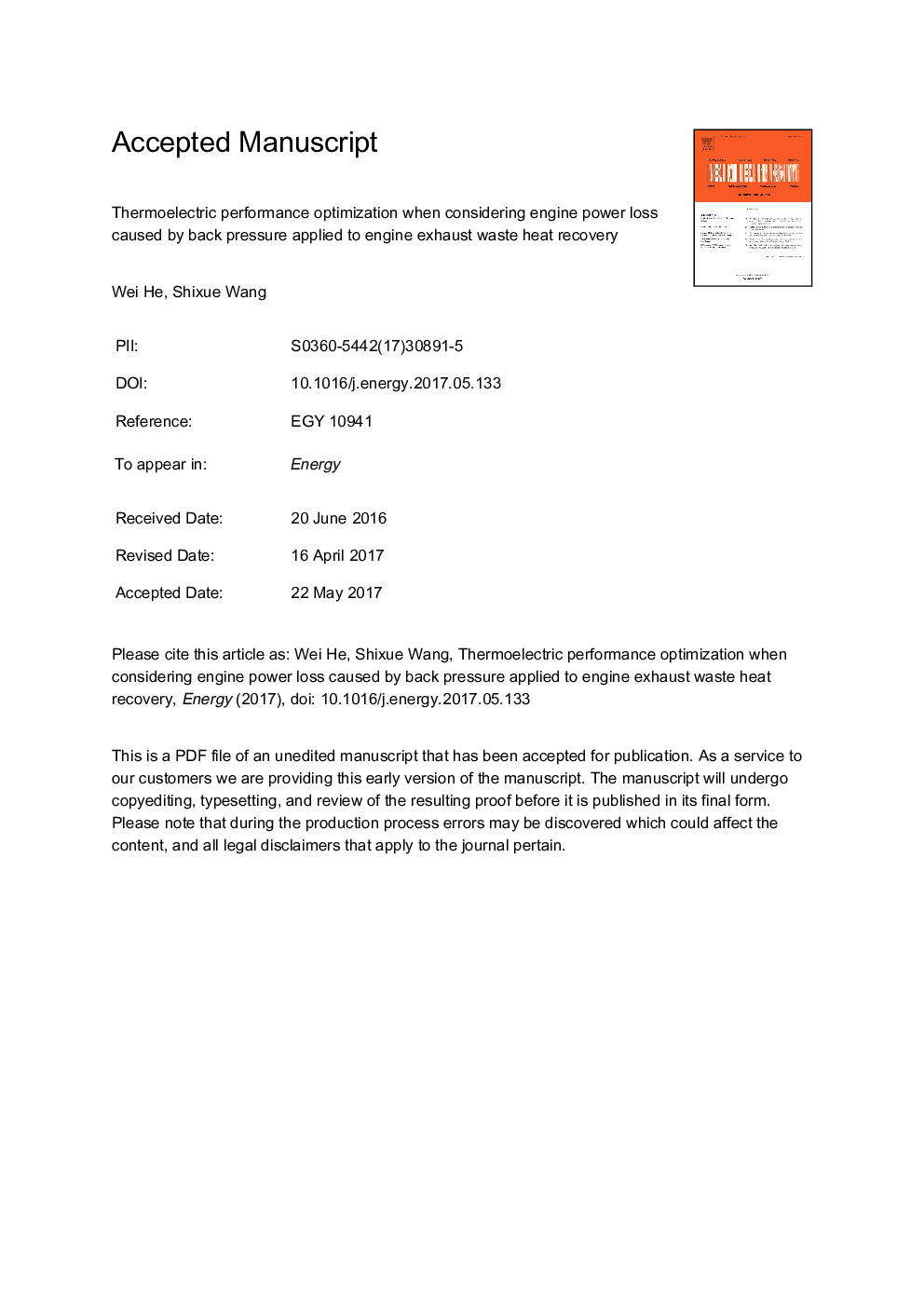| Article ID | Journal | Published Year | Pages | File Type |
|---|---|---|---|---|
| 5476582 | Energy | 2017 | 19 Pages |
Abstract
A numerical model of a thermoelectric generator (TEG) is developed using the finite element method, and the convective heat-transfer coefficient and back pressure are calculated. The effect of the back pressure on the engine power loss is analyzed at different rotating speeds using GT-POWER simulation software. The optimal thermoelectric performance is analyzed considering the maximum net power output as the optimization objective. Results show that the net power output of the TEG can be considerably higher than the engine-power loss by optimizing the dimensions of the exhaust exchanger. When the rotating speed changes, the optimal height changes slightly; however, the optimal length and width change considerably. Considering the average values of the optimal length and width, the percentage deviation in the net power (approximately 4.2%) is the lowest for the following optimal dimensions: height = 0.005 m, length = 0.68 m, and width = 0.76 m. Further, a design height of less than 0.015 m also is acceptable if the corresponding optimal length and width are chosen, as a relatively high output power can be obtained with dev<10%. In brief, a high net power can be achieved by optimizing the design of the exhaust exchanger, regardless of the change in the rotating speed of the engine.
Related Topics
Physical Sciences and Engineering
Energy
Energy (General)
Authors
Wei He, Shixue Wang,
